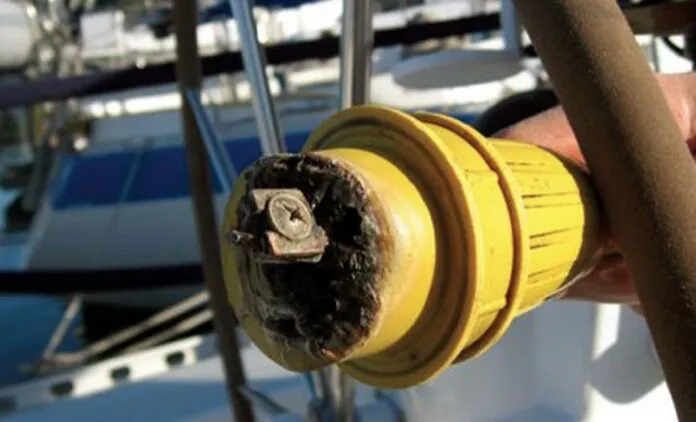Boats with AC power systems continue to give their owners problems. Many of these problems are avoidable, and some are deadly. The major problem in using power from shore is that the risk of lethal shock is substantially greater in and around a boat than it is in a house. Moreover, the nature of the shock hazard changes when the boat is moved from freshwater into saltwater.
An AC electrical system must be designed and installed on the boat in such a way that the crew and any nearby swimmers are protected, no matter what kind of water is underneath your hull. Any stray current in the system will always work its way back to the source of power. And when you tie into shore power, it’s going to head for the AC ground that is established somewhere up on shore, possibly hundreds of feet away. The return point for shorepower is a conductive rod driven into the earth. All leaking current heads for the driven rod.
When it comes to shorepower systems, it’s a serious mistake to treat a boat like a floating house. The electrical standards established by the American Boat and Yacht Council (ABYC) clearly indicate that you should handle the entire boat as a grounded-type portable tool. Never ground both the hot wire and the shore-grounded neutral on the boat. The three most common errors boat owners make are: (1) connecting the grounded neutral (white wire) to the grounding wire (green wire); (2) omitting (or cutting) the green grounding wire connection to the engine; and (3) using equipment that requires both alternating and direct current, and which is not specifically designed for use in a marine environment. Making these mistakes can be very serious, if not disastrous.
For more details these common errors and other wiring advice, purchase Marine Electrical Systems, Volume 5: AC Systems from Practical Sailor.
Or, buy the entire Marine Electrical Systems six-part series!


































